UP TO THE MINUTE
Gabe Goepfert & John Linnell - Better Roofing Through Chemistry - PODCAST TRANSCRIPT
August 6, 2024 at 12:00 p.m.Editor's note: The following is the transcript of a live interview with John Linnell and Gabe Goepfert of Everest Systems. You can read the interview below, listen to the podcast or watch the recording.
Intro: Welcome to CoatingsCast, the ultimate podcast dedicated to the science, art and innovation of liquid and fluid applied roofing coatings for surfaces and waterproofing. It's time to roll up our sleeves, put on our lab coats and dive headfirst into the world of liquid protection that keeps your roofs and surfaces in prime condition. The future is here and it's liquid, so don't miss out. This is CoatingsCast where every drop counts in the world of roof and surface protection.
Karen Edwards: Hello everyone and welcome to another episode of Coatings Talk. My name is Karen Edwards with CoatingsCoffeeShop and today we are welcoming the team from Everest Systems. John and Gabe, welcome. It's nice to have you here.
John Linnell: Hi, nice to be here. Thank you.
Karen Edwards: All right, so for people that don't know, first of all, let's start and introduce yourselves and tell us who you are and what you do at Everest Systems. John.
John Linnell: My name's John Linnell and I'm the owner of Everest Systems. Everest is a manufacturer of several different roofing product technologies. We manufacture acrylic coatings, silicone coatings, polyurethane foam and some specialty sealants.
Gabe Goepfert: Yeah. And I'm Gabe Goepfert and I'm the VP of sales and marketing. So get a chance to work with John for the last eight years on just growing Everest and working with the sales team and the contractors out in the market.
Karen Edwards: All right, so I would love to hear a little bit about your story and why you founded Everest Systems and what your background is that you decided to take this step.
John Linnell: So I started off with a large multinational chemical company that supplied the coatings industry called Rohm and Haas and I worked for them for 20 years. I ended up moving to the US from New Zealand with that company and they were super focused on high performance coatings that's supplying the roof coatings industry. I then moved on to a company where I was the technical manager and we developed coatings and sealants in Houston. And then finally I started in about 12 years ago this manufacturing business here in Houston too. So my background was in raw material supply in technical advances and manufacturing. So it gave me a really good outlook on the various approaches to the industry. And from that I sort of gathered that there was an opening in the marketplace to make high-performance products. What I was seeing out there that roof coating systems were considered more of a paint job than a legitimate roofing system.
And I think that was caused by some lower-performing products in the marketplace. So as I saw the industry and the technologies evolving and improving, I recognized that if I sold high-performance roof coatings and sealants, that I could be successful. And when I first started Everest, I remember going to a trade show on the West Coast and half of the booths were small coating manufacturers. And I looked around, I'm like, "So how can I differentiate myself from the crowd?" And since that time we've grown exponentially and I think that's been down to making great products and at a price point where our customers can be successful and the building owners can do a less expensive approach than tearing off the roof and replacing it.
Karen Edwards: Wow. Yeah, I mean I love hearing the story of seeing a gap and then being able to come to market and bring a product that fills that gap. And you mentioned half of the booths being these small coating manufacturing companies and I mean the market really has a lot of options. So I think it's important that we talk about what sets Everest apart from the other in this space because it is becoming pretty diluted with a lot of options. And so maybe Gabe, you could talk a little bit about what sets Everest Systems apart and a little bit about your culture.
Gabe Goepfert: Yeah, I think a couple... to echo a little bit off of some of the stuff John was saying is in my role here it's a little bit unique and I'm very lucky to have some of the team that I work with, most of the guys that are on the sales team actually started on the roofing side of this business including myself. And so several of us were actually buying from John. And some key things that we noticed as contractors was just that the stuff made us successful, it's really easy to sell things that you truly believe in. And there are us as contractors when we were out in the marketplace using... there's a significant difference between buying the things that John was selling at Everest. And it was really refreshing because so many of the things that we were seeing coming on the market were not nearly of the quality that we needed to be successful on the roof.
And so as those things happened, the people that believed in that product, we've had a chance then to come and work for John and it's been great. We just keep telling that same story over and over again. Our goal here at Everest is to make the contractor successful. So we try and approach everything from that version of what's going on with the contractor, what are their needs and what things can we put in their hands because this whole business is based on the contractor and that contractor being able to service the building owner, getting them a successful restoration on the roof. And then if that is true and we can put the things in their hands to make those things true, that makes a huge difference.
And secondly, the other very unique thing and this we noticed when we started buying from John was it's a very unique thing in this industry to have a true chemist that is the owner of the company. So he gets to make the decisions based on what's right for the customer and keeping the quality and the... We're very innovative here and it's because of that unique combination of roof for input and needs on the roof and a chemical engineer that's able to understand those technologies and put them together.
John Linnell: I think that, just to reiterate that what happens in most businesses especially as they get big and they have a shareholder responsibility, often the profitability of the business becomes the be all and end all of the focus of the company. And often the customer gets further and further down the priority list. And since we're small and smaller and nimbler than the big gorillas, we can still focus on the customer and focus on quality and not just make profitability the be all and end all of [inaudible 00:07:44].
Gabe Goepfert: And on the flip side of that, when you... speaking of the diluted marketplace, when you go and you have a chance to be around some of these very small companies, John's pedigree of coming through Rohm and Haas and some of the larger companies and understanding the technologies on the supply side, they don't have the luxury of having that kind of chemical background coming into as a small company. So we have that sweet spot within our group of people that is, we're not so big that we still can be very customer-facing, but at the same time we have the experience of what some of these larger companies bring to the market as well.
Karen Edwards: Okay. So I want to understand what that looks like because obviously you're talking to contractors on a regular basis. Are you spending time in the field? Are you having focus groups? How are you getting the feedback to make those tweaks and adjustments that they need?
Gabe Goepfert: Yeah, that's a good question. So we have... again, back to our sales team, our sales team being mostly from the roofing side of this, we spend a lot of time on roofs with contractors, a lot of time listening to understand what's going on and what kind of issues they're having out in the roofing space, what things can make their job easier, better, faster, then bringing those things back.
One of the phrases that I use is that we speak roofer and then John speaks chemist. And so then we try and somewhere in the middle there have that conversation between roofer and chemist and what can we do to bridge the gap there. It doesn't do any good to make a product that is amazing that has no application on the roof at all, at the same time, it needs to have significance on the roof. So if we're able to have those conversations and we have great relationships with our contractors and they've been nice enough to help us along the way as far as what their needs are, and we try to be the industry leader. So trying to make those new changes ahead of time so that we also, again, back to the size of us, we can get things to market quicker to get things in people's hands-
John Linnell: So some of the things that I've done throughout my life since I've worked in many, many different technologies, whether it's epoxies or polyurethanes or silicones, I often see some benefits across different industries than I can apply to perhaps my acrylic business or my urethane business. And so with my broad knowledge, I've managed to sometimes innovate in places that other people have not thought of yet. So we came up recently with something called Eco-Level was because our customers are saying, "Well, we want a ponding water resistant product."
And so at first I came up with a ponding water resistant product with some modifications that I've seen through the years and then I realized, "Well wait. Shouldn't we really eliminate those ponds off the roof?" So we came up with this product for removing the ponds off the roof, and I observed that there are competitive products out there for ponding water elimination and those products you trail them on and you're putting this blob on the roof and it's very hard when you're on the roof to see where on earth the pond is. So I thought, "Well, why don't I come up with something that is actually fluid, finds the low point on the roof and then cures solid?" And so we had this product that finds the low areas and cures and eliminates the ponds. So those are sort of the innovations that have come up. We keep innovating and that's an example.
Karen Edwards: I love it. It's kind of like be the water. You're going to find the water, you can be the water and then you're going to turn hard. That's just brilliant.
Gabe Goepfert: One of the keys that we found is at the end of the day, the contractor is the most important part of this business. That's where the rubber meets the road and our goal, and it seems like we've been pretty successful so far, but our goal is to put things in their hands that are truly helpful to them. And we want to see those contractors be successful because this industry... we have a fantastic industry. The coating restoration business is so unique because it allows us to do things that are great for the building owner. It's less expensive, it's great for the environment and it helps us extend the life of roofs indefinitely. But it's also great for the contractor because it makes them profitable and gives them a chance to use more efficiently, their labor, all these different things.
And if we lose focus on that, then the whole thing goes in the tank. And every time we're able to have a successful restoration project, then we're going after the market share of the whole roofing industry, not just... because our competition really isn't other coating manufacturers. Our focus is how do we get more restoration products out in the marketplace and see the whole coating industry grow and every day that the coating industry grows, Everest grows. That's good for everybody in the restoration business.
Karen Edwards: Yeah, agreed. I mean, coatings are just explosive right now. And you started 10 years ago, and I think that they didn't always have the best reputation. As you mentioned, John, somebody would buy kind of a paint, it wasn't even really meant to do that and put it on a roof and then it's leaking a year later. So I guess without giving away your secret sauce, but how do you create these lasting systems and what does that process look like? I'm sure there's development and research and lots of testing.
John Linnell: Yeah. So first of all, we have to identify the need. And so my experience at Rohm and Haas, they're the premium resin supplier to the roof coatings industry. So having that insight with the R&D departments there, I understood... and actually one of the interesting things is that as a coating manufacturer, I realized that I have in a year 500 people come through my door and tell me, "Well, this is the right stuff. If you use this, your coatings will be the best ever." And so I could see that a person that didn't really have the background, he can't tell which of these people are blowing smoke and which of these people actually have a legitimate idea. And I think that me... as we've talked about that me luckily being the business guy and the technical guy, I am the old guy. So it's 30 years of experience and that ironically gives me the ability that I've made mistakes over the years and listen to some of these people and it turned out that was a terrible idea.
So through trial and error over the years you know what's going to work. So it allows Everest to see new ideas coming across our desk and say, "Well, that's actually something innovative. Let's investigate that more." So I think a lot is about just how long I've been around. It's the broad base of knowledge and also the contractors out there that are willing to try some of my mad brained ideas and tell them, "Give me feedback." And then we managed to get to market sooner than most because we have a little bit more understanding of some of these chemistries than others.
Gabe Goepfert: So, another key part of that too is, and John mentioned it in the very beginning, we manufacture silicone, acrylic, polyurethane foam sealants and now polyurea as well. So we have a real blessing in the sense that we're not just one material that we manufacture, so we can tailor these systems to really fit whatever the particular roof is requiring. So often if you make one thing, then that's your answer for everything. And that doesn't lend itself to be the best option. If you're a hammer, all you see are nails right? So what we try and do is because we have the multiple different products that we manufacture in-house to take a look at whatever the particular situation is and see what systems fit that particular need the best, it has to do with budget, it has to do with issues that are on the roof.
John Linnell: Climate.
Gabe Goepfert: Climate, all the things. Something that works in New York City isn't going to work the same in LA. So we are able to have some flexibility there where some other companies maybe don't. And it also back to the contractor, the fact that we can put those arrows in their quiver that when they go to a job site and they see a particular issue, that we would have something that would be able to... it's not a blanket solution. And then the other part too is we have multiple systems to meet multiple substrates, and each one of those systems has their strengths and we need to have those putting the right thing in the right place is as important to having a restoration system be successful than it is the right product or the best product in the wrong place may still fail. So you have to have the best products and the understanding of which products go in the right places. And having... back to the contractor, again, having a contractor base that understands how to apply those things in the right places as well.
Karen Edwards: What does your support look like if you do have a contractor that maybe just isn't quite sure what the best system is going to be for this specific building? Do you have folks that go out there with them, walk the roof, check it out and make those recommendations to help them make the right decision?
John Linnell: Yeah. So we have the luxury of having salesmen that are very technical. So we have coverage throughout the US and can pretty well put a person on any roof to support a contractor. So often we can have a contractor walk any particular roof for... have a salesman walk any roof for a contractor and give them suggestions on, "This might be the most economical. What's the budget like? What does your customer really need?" And so we can support them with that. And we have a fantastic set of salesmen that really can help in that area.
Gabe Goepfert: Yeah. We try and do a lot of listening, understanding what the goals of the project really are and make sure we're putting a solution out there that is that. And again, we're spoiled because we have salespeople that have actually applied the material and understand what it takes to do X, Y and Z, so we can put a very proficient person up on the roof to help that contractor because you're right. There are moments, I mean, it's way better to ask us on the front side to make sure that we're eliminating possible pitfalls on a project and work together to figure out what the right solutions are with the contractor and what makes the most sense in that area and on that particular roof.
Karen Edwards: When I was recently at the Florida Roofing Expo and I talked to one of your team members on our soundstage, which if you go to the RoofersCoffeeShop YouTube channel, you can watch that. That was with Rob. And we talked a little bit about your model being slightly different in terms of you sell direct to contractor right?
Gabe Goepfert: Yeah. So that's been another piece of our secret sauce is we have that direct relationship with the contractor. And what we have found is that it just one more piece of efficiency. So instead of having to go through a third party, we have that direct relationship with the contractor. It's just been the model that works for us. We know that other people go through distribution and that's fine too, but it has seemed to be very effective for us to have a direct relationship with those contractors. They seem to appreciate it. And yeah, it's been really rewarding. I think we kind of stumbled into it in the beginning and then it seemed to be kind of our niche. And as we've grown, that direct business has been very effective. And since 11, 12 years ago when John started, now we have coverage across the whole US. And so when we were only shipping out of Houston, that was a bit of a challenge. But now that we have regional warehouses, it's been a lot easier to meet those needs to the direct business.
Karen Edwards: Excellent, thank you. I wanted to talk a little bit more about the innovation side as well because you mentioned the specific eliminating ponding water, and I think that was Eco-Level, but there's some other things that we noted that I don't know what they are, Silkoxy. Can you talk a little bit about some of these innovative products?
John Linnell: So let's talk about... so we'll start with... because basically I think most of our products tend to be innovative. So we start with the acrylics. We have a high tensile product called Evercoat HT, and that product stays unbelievably white, more white than any other roofing product, whether it's PVC, TPO or other coating systems. We had a product in Louisiana that's over 10 years old and it still looks bright white, which is just unheard of for coatings. So that acrylics is pretty exceptional. Then we sell the alkoxy silicone roof system. And the benefits of the Silkoxy system compared to literally every other silicone out there is that it has primeless adhesion to most substrates. It's more flexible, twice the flexibility of most of the other products out there and doesn't smell. One of the problems with most of the silicones out there is when you do start doing a hospital or retirement home or something like that, you can end up evacuating the building with smelly products.
And we've found that the alkoxy technology gives off a very, very faint smell rather than some of the stronger odors. So that's something that the alkoxy offers. And then finally we have a sealant called EverSeal, and we recognize that every sealant manufacturer out there puts plasticizers in their sealants. And I'm like, "Why do you do that?" And from what my conversations with all of them was, "Well, it's cheap and so puts more money in our pocket and it only compromises it a little bit." Well, actually, I think it compromised it a lot. I think about what happens with plasticizers, they don't stay. So you put a sealant, if you think about... if you've got a sealant around your windows of your home, you'll find that it's all brittle because the plasticizers tend to leave. So we created this product that has no plasticizers in it, which means it sticks to absolutely anything.
It even sticks to silicone and it's paintable, so you can cover it. If somebody's done a repair on a roof with a silicone sealant, you can go up there, put this product over that silicone and then come back with a water-based product. So that's something extremely unusual. It also sticks underwater, so you can go up in the rain and do a repair and instead of using wet patch, which once the rain stops is a horrible product to maintain, you can put this product down in the rain, seal the roof, come back a year later and restore the roof.
So yeah, that's some of the innovations that we have. I did want to touch on one other product that is pretty amazing. We came up with a system that has a polyurea over polyurethane foam with silicone on top, and we took it to a hail testing lab. They shot a four-inch ice ball at 130 miles an hour at this roofing system and their jaws dropped because no roofing system's ever passed that test before. And this system, it bounced off and left a little dimple and survived just fine. And so certainly as we see a little bit of climate change going on, you're seeing more hail storms getting into larger regions. This literally is a hail-resistant roofing system. There isn't another technology that can offer that resistance.
Karen Edwards: Wow, that's impressive.
Gabe Goepfert: So when we enter a different space, so when we want to get into silicone, we took a look at all what the different things were and we decided to go... this is an example, we decided to go with the alkoxy formulation because it was better, because the attributes that went along with the alkoxy formulation versus the oxime, we believed in those... that is a superior technology. So that's what we pursued. On the acrylic side, we want to make the best acrylics and so we use the best resins and the best things to make the best stuff. But through that, we also notice that as we also get a lot of help and... What's the right word? In those innovations, different ideas because we're partnering with not just our customers, but also our suppliers. So when they come up with a new idea, we get some first looks at some things too, some neat ideas that are out there and we get a chance to help develop some of those technologies. And then we're able to bring those to our contractors and building owners that can really drastically change things. Another-
John Linnell: [inaudible 00:26:16] just going to dwell on that one minute. Since I've been doing this so long, often the suppliers bring me their innovations to say, "What do you think? Let's evaluate this." And so we get first peek at some of the new stuff coming along. So it's a pretty neat environment that we're in.
Karen Edwards: Yeah, that's awesome.
Gabe Goepfert: Another unique thing to the polyurea, we have a polyurea that passed the UL fire testing rating too.
John Linnell: Oh, that's true. That system that I described, we also passed the fire testing, which is very hard to do with polyurea, so that's a pretty unique system.
Gabe Goepfert: So we just have some... within our product line, we have some things other people just don't. And from a sales point of view, it's great because we get a chance to go in and bring something to our customers that other people don't have or have access to. And it's a chance to get those contractors another opportunity to differentiate themselves, but then also just to be successful on those roofing projects.
Karen Edwards: Wow, so I'm super excited. I'm a contractor, I'm listening to this and I want to start installing your systems. What do I need to do?
Gabe Goepfert: Yeah. So first step would be just getting in contact with us. So reach out to us through our website or our toll-free number, reach out and we'll get you in touch with one of our local salesmen, one of our technical reps. And we will come out and get you started down the path. Depending on where you're at as a contractor, get you at least trained in on what our systems are and what it takes to be a certified contractor with us. We'd love to be helpful with anybody who wants to grow their business, and that's really what we're here for.
And if we can be helpful on the other side of this is not just the contractors, but specifiers as well. So if we have people that are listening that have a project, maybe you're a building owner or maybe you're a consultant or an architect and you're thinking, "Well, maybe this project would lend itself to a restoration and we could use the money that we save in the restoration process in maybe another part of the project," same thing, reach out to our office, we'd love to do a roof walk, get the information that we need and help guide people down the path for successful restoration projects.
Karen Edwards: Excellent. And you can also go to coatingscoffeeshop.com and look up Everest Systems on there. They have a full directory with a contact information, website, phone number, everything you need to get in touch. Well, guys, it was just a pleasure to have you on today to talk about your innovation, what makes you unique and why you're different. And I think it was a great, great conversation. So thanks for being here.
Gabe Goepfert: Thanks.
John Linnell: Thank you.
Gabe Goepfert: Yep. Thanks for your time.
Karen Edwards: All right, and thank you all out there for listening. Be sure to follow along, follow us on social media, subscribe and follow us so you do not miss a future episode. We'll see you next time on CoatingsCast.
Outro: Thanks for joining us on this coating adventure. Stay tuned for more episodes. And in the meantime, be sure to follow us on social media to stay updated with all things roof coatings. Until next time, stay coated. For more information, go to coatingscoffeeshop.com.












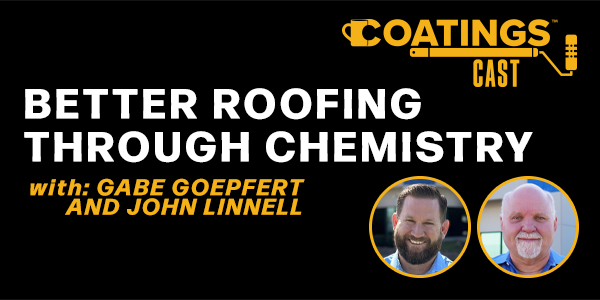

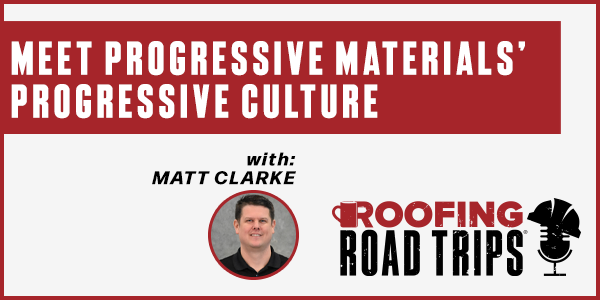
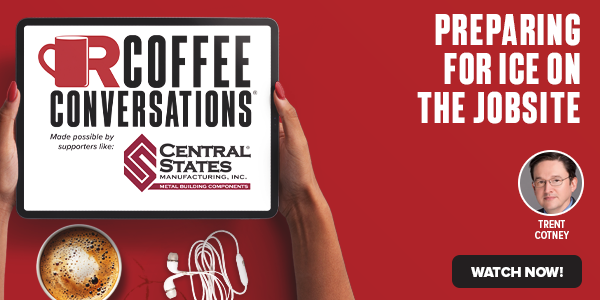

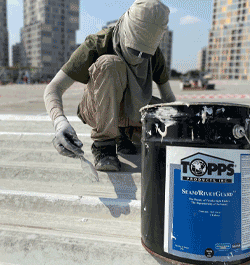
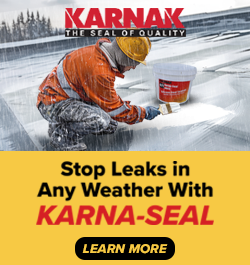


Comments
Leave a Reply
Have an account? Login to leave a comment!
Sign In